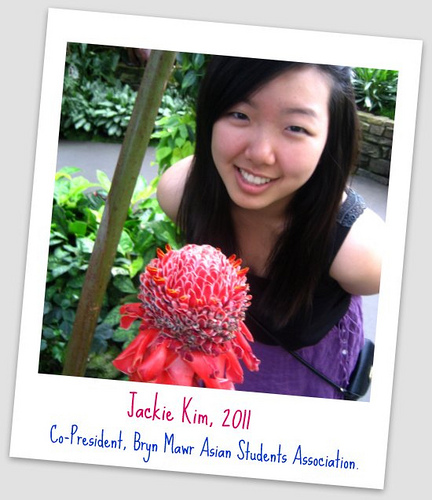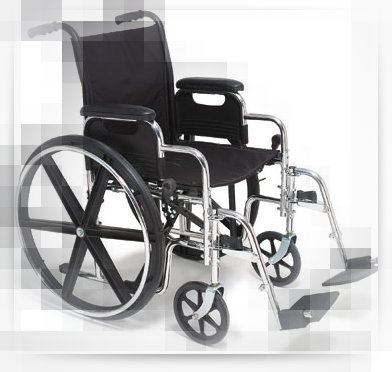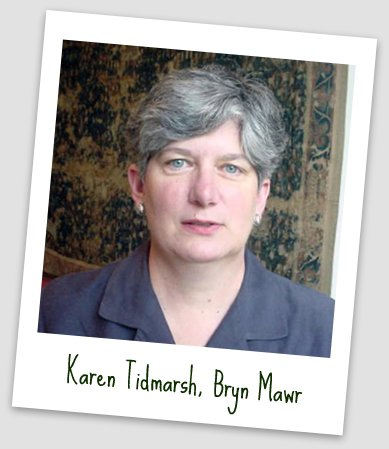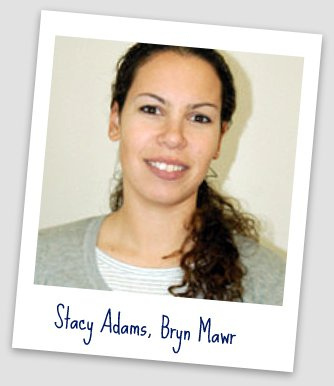More and more Bryn Mawr students are coming from overseas
By Amanda Kennedy
To enter Madhavika Bajoria’s room in the Rhoads North dorm at Bryn Mawr College, one must first walk through elephants-and parrots and fish, too.
These vibrant mobiles from her native country of India hang from the ceiling, a combination of jangling beads and embroidered animals in bright pinks, yellows and blues flecked with gold yarn. Bajoria, 20, a sophomore, got them last year at home in Calcutta over winter break to brighten her room during a bleak winter.
“I really need color,” she said.
Bajoria is used to “pleasant” winters in India that feel more like fall, she said. She especially misses home when the rain falls in Bryn Mawr because the showers remind her of the monsoons in India.
Bajoria has had to adjust to many other aspects of life at an American college: classes held in English, American food at the dining halls and being thousands of miles away from family, to name a few. But the lure of studying at a liberal arts college in the United States, where young women gain insight on independence and intellect, helped her to hop on a plane and never look back.
Bajoria is one of a growing faction of international students who choose to study at Bryn Mawr each year. In fact, the number of international students attending Bryn Mawr during the 2010-11 school year is the largest in history, with 18.9 percent of the student body from 62 countries represented, up from 17.4 percent last year.
Bryn Mawr is part of a national rise in bringing more international students to college campuses-the Chronicle of Higher Education reported in July that foreign enrollment increased by 2 percent in American colleges and universities to 586,000 students for fall 2009.
Each year the freshman class at Bryn Mawr includes more international students. While class size has remained the same-around 370 students-the percentage has risen, from 20 percent international for the Class of 2012 to 21 percent international for the Class of 2013, “the most international yet,” Bryn Mawr President Jane McAuliffe proclaimed in 2009 at convocation. The Class of 2014, however, trumped all previous years with 27 percent of entering freshmen coming from overseas.
The sudden increase in enrollment in the past two to three years is thanks to Bryn Mawr’s ability to provide financial aid to international students, as well as the development of the global economy, said Jenny Rickard, Chief Enrollment and Communications Officer.
The world is flat
“That I would attribute to the world is flat,” she said. “With the economy changing, now more students of those who don’t need financial aid or those who aren’t needing as much financial aid as before [can come to Bryn Mawr] just because of the economies in other countries have grown. It’s a situation we hadn’t seen before.”
Because of the large influx of international students in such a short period of time, Growth and Structure of Cities professor Gary McDonogh and other faculty members on the Diversity Council would like to gain more knowledge about the make-up of the student body.
“What I think has struck some of us is, that this is a serious change that demands some discussion,” he said. “It’s not to say that incoming students have caused problems. It’s more significant that it is a conscious shift.”
The Diversity Council is considering hiring people to work with the deans’ office to run focus groups and compile questionnaires for the student body to complete. Responses of international students would be compared to responses of domestic students to gauge how international students are fairing with the rest of the student body.



 Tidmarsh realizes that some students have an easier time adapting to college than others. “If they’re good at it and figure it out quickly-great,” she said. “And if not they almost have to fall on their face before they can begin to be successful. And some of them are never as successful as they deserve to be because they don’t have the study skills that a place like this demands.”
Tidmarsh realizes that some students have an easier time adapting to college than others. “If they’re good at it and figure it out quickly-great,” she said. “And if not they almost have to fall on their face before they can begin to be successful. And some of them are never as successful as they deserve to be because they don’t have the study skills that a place like this demands.”

 lettuce and raw vegetables, the salad contained a few extra ingredients.
lettuce and raw vegetables, the salad contained a few extra ingredients.
 shared their experiences of growing up as Asian-Americans.
shared their experiences of growing up as Asian-Americans.